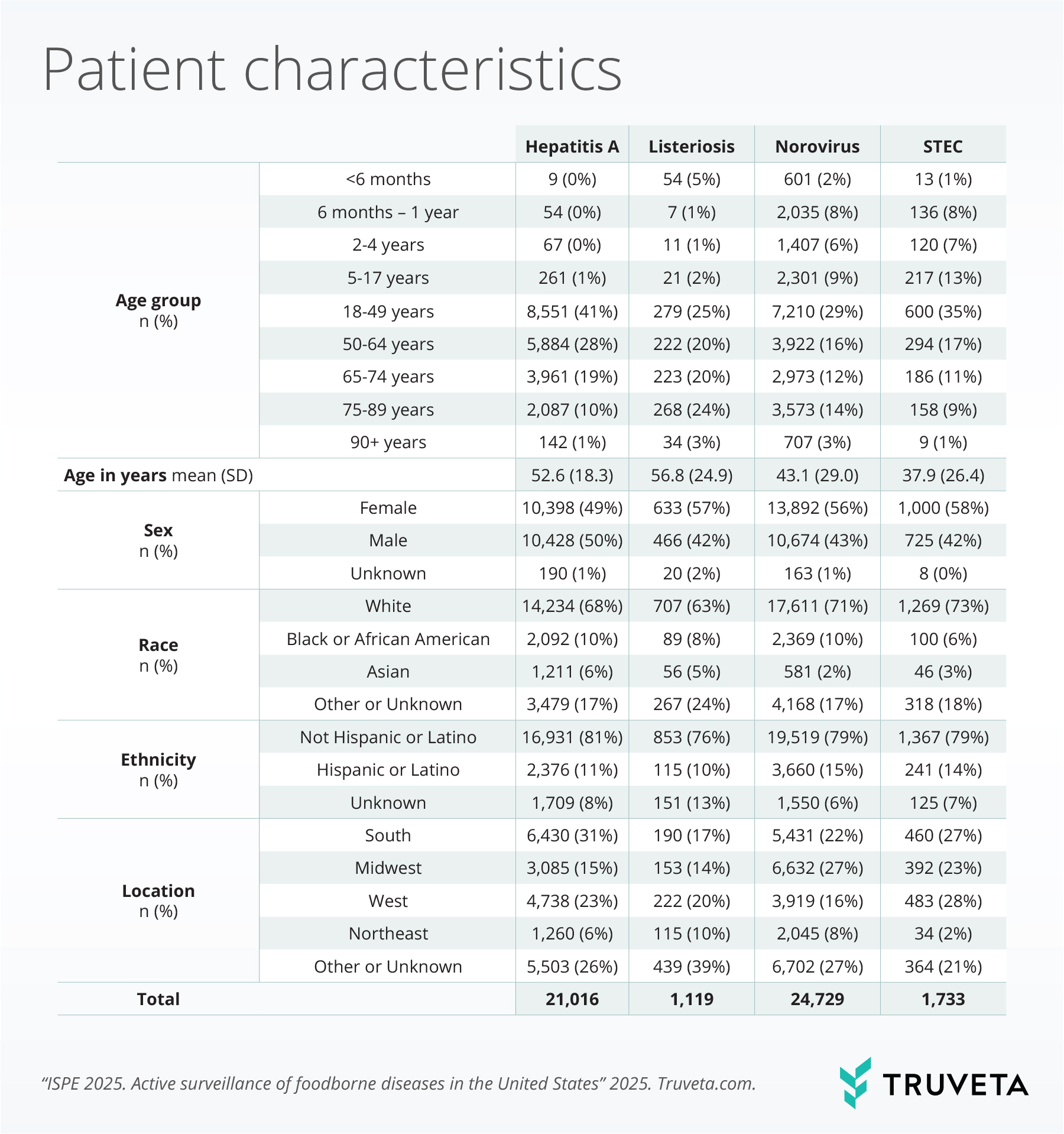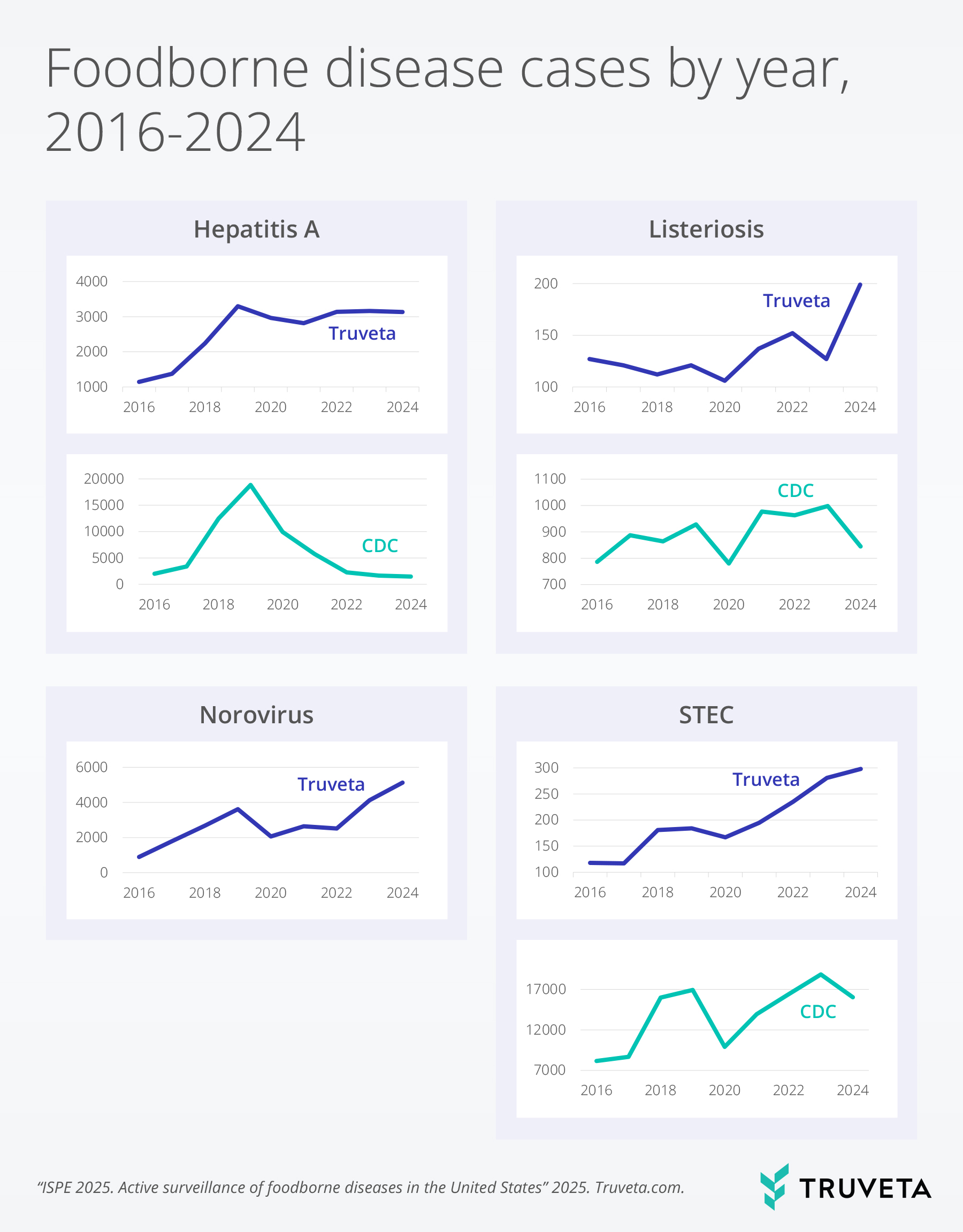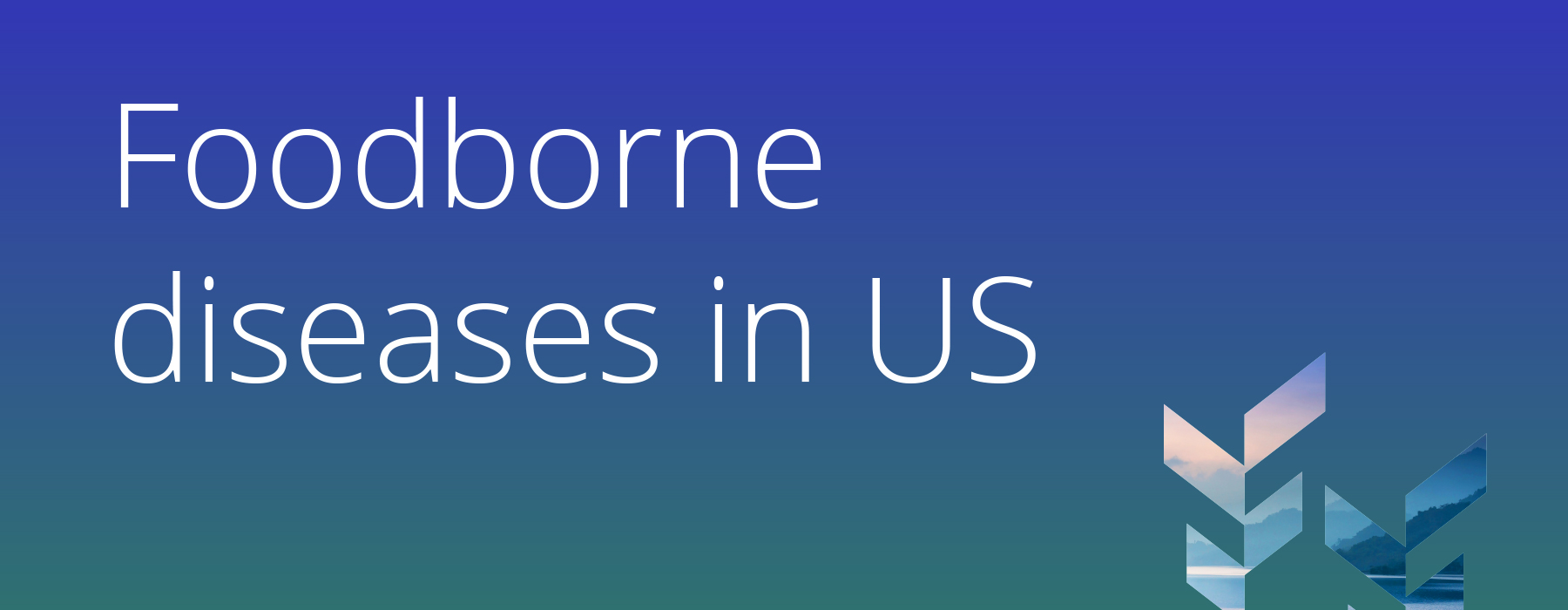- Truveta Data is well-suited to support real-time active surveillance of infectious diseases, as illustrated by trends in hepatitis A, listeriosis, norovirus, and STEC.
- Our findings closely align with national surveillance data from the CDC, demonstrating the reliability of electronic health record (EHR)-based insights.
- These results highlight the potential for rapid detection of outbreaks to inform timely public health action.
Foodborne diseases cause significant illness and death in the United States (US), with diseases caused by Listeria and norovirus among the top five causes of foodborne disease-related deaths. While states and territories report cases of select foodborne diseases to the Center for Disease Control and Prevention (CDC) National Notifiable Diseases Surveillance System (NNDSS), reported cases can underestimate the true burden of disease, exclude certain diseases, and have delays in availability.
Our study set out to answer a key question: Can Truveta Data be used to measure, in real time, the trends of foodborne disease cases and detect patterns consistent with national data?
The results show that Truveta Data not only aligns closely with CDC-reported trends, but also offers the timeliness needed for proactive public health action.
Methods
Patients with a recorded diagnosis or positive laboratory test for hepatitis A, listeriosis, norovirus, or Shiga toxin-producing E.coli (STEC) between January 1, 2016, and December 31, 2024 were included
Four disease-specific cohorts were created and examined for demographic characteristics, geographic distribution, and annual trends in case counts. Patterns observed in Truveta Data were compared against national case counts reported in the CDC NNDSS (1, 2).
Results
- 21,016 patients with hepatitis A
- 1,119 patients with listeriosis
- 24,729 patients with norovirus
- 1,733 patients with STEC
Patients with listeriosis had the highest median age at 56.8 years, while patients with STEC had the lowest at 37.9 years. The majority of patients were female across diseases, except for hepatitis A with 49% female. The majority of patients were White and non-Hispanic or Latino across all diseases. Patients were identified across all regions of the US, with 31% of patients with hepatitis A residing in the South.

Yearly trends
- Hepatitis A: Large peak in 2019, consistent with a national outbreak
- Listeriosis: Relatively stable, but overall increasing trend from 2016-2024
- Norovirus: Increase in 2019, followed by a steady increase from 2022-2024. NNDSS case data are not available for norovirus, but these trends are in line with increases in nationally reported outbreaks.
- STEC: Increases in 2018-2019, followed by steady increase from 2020-2024
Across all four diseases, observed patterns in Truveta Data were relatively consistent with trends reported in CDC NNDSS data, including national outbreaks.

Discussion
Citations
- Centers for Disease Control and Prevention. National Notifiable Disease Surveillance System, Annual Summary Data 2016-2022. Available at http://wonder.cdc.gov
- Centers for Disease Control and Prevention. National Notifiable Diseases Surveillance System, Weekly Tables of Infectious Disease Data. Atlanta, GA. Office of Public Health Data, Surveillance, and Technology. Available at: https://www.cdc.gov/nndss/data-statistics/index.html

